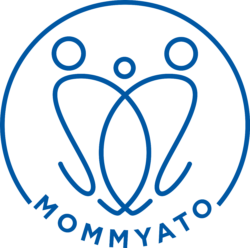28 Jun Babies Born with Cleft Lip and Palate
Around the world, 1 out of 700 babies are born with cleft lip and/or cleft palate.²
July is National Cleft and Craniofacial Awareness and Prevention Month, a time to bring focus on the special challenges and treatment of babies born with orofacial malformations like cleft lip or palate. Around the world, 1 out of 700 babies are born with cleft.²
What Causes Cleft Lip and Palate?
Cleft malformations of the face occur in the first trimester of pregnancy, with the lip forming between the 4th and 7th weeks and the palate forming between the 6th and 9th weeks. Researchers don’t know exactly why cleft malformations occur, the CDC (Centers for Disease Control) released studies that show mothers who smoke, have diabetes or who take certain meds (like for epilepsy) during the first trimester have an increased risk for cleft.¹ These are considered environmental reasons for cleft formation, but genetic factors can play a role. Sometimes cleft forms in combination with other facial malformations related to “syndromes” such as Pierre Robin Sequence, Edwards Syndrome and Patau Syndrome.
Babies born with a cleft have a malformation of the lip or palate. This means parts of the face and skull, which develop separately in the womb, do not join together properly. Cleft is the most common craniofacial abnormality.
There are various forms of cleft malformation. It can range from a notch in the upper lip on one (unilateral cleft lip or palate) or both sides (bilateral cleft lip or palate) of the mouth, to a complete separation of the gum extending into the nose (complete cleft lip or palate). A baby can have a cleft lip without a cleft palate, vice versa, or both. Cleft palate is most common, often involving both the soft and hard palates in the back and front of the roof of the mouth.
Can a Cleft Lip or Cleft Palate be Fixed?
There are many organizations that raise money and bring awareness to the challenges and treatment related to cleft lip and palate repair. Check out these organizations for comprehensive information, to find a treatment team worldwide, and to better understand a long term care plan for your baby:
- American Cleft Palate Craniofacial Association: https://acpa-cpf.org/
- Ameriface: https://www.ameriface.org/index.html
- Cleft Lip and Palate Association: https://www.clapa.com/
A treatment plan may span 20 years, involving many different types of specialists such as: reconstructive surgeons, audiologists (hearing), speech therapists, orthodontists (dental) and other clinicians. Try not to be overwhelmed at this idea. Lip repair usually occurs within a baby’s 3-6 months of life and palate reconstruction generally occurs between 6-12 months. Sometimes a bone graft is needed between the ages of 7-12 years to make sure adult teeth come through. Later, when the face stops growing, some adults seek rhinoplasty (nose surgery), lip revision, restorative dental surgery, or osteotomies (surgical intervention to realign the jaw and teeth often changing a person’s profile appearance).¹
The treatment plan for cleft repair is highly successful for babies, allowing each child to reach their fullest potential in life. In most industrialized countries, being born with a cleft does not mean a lifetime of social stigma and prejudice. Kids grow up to lead full, successful lives like any other child. As a parent, doing your research ahead of time, gathering resources, and finding a treatment team are all critical steps to take in advance of your baby’s birth. Doing so will ensure your baby gets the very best start in the journey of their life.To learn more about breastfeeding a baby with a developmental condition of the mouth, click here.
REFERENCES:
- Centers for Disease Control. December 2020. Facts about cleft lip and cleft palate.
- Cleft Lip and Palate Association. 2022. What is cleft lip and palate?



